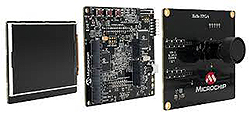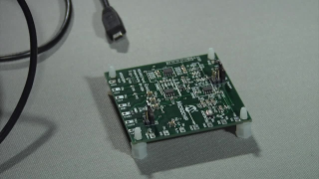Make low-power innovation possible with increased thermal headroom by leveraging our PolarFire FPGAs. Build your next product with increased compute capability, while solving key power design challenges.
Our FPGAs and SoC FPGAs consume up to 50% lower total power than competitive FPGAs. Our nonvolatile process delivers FPGA families that are live at power-up, with minimal in-rush current, zero configuration current and significantly lower leakage than SRAM-based alternatives.
- Lowest static power

- Significantly lower transceiver power
- Fanless enclosures with small/no heat sink
- Increased thermal headroom for more compute capability
Say Hello to PolarFire FPGAs and SoCs.











